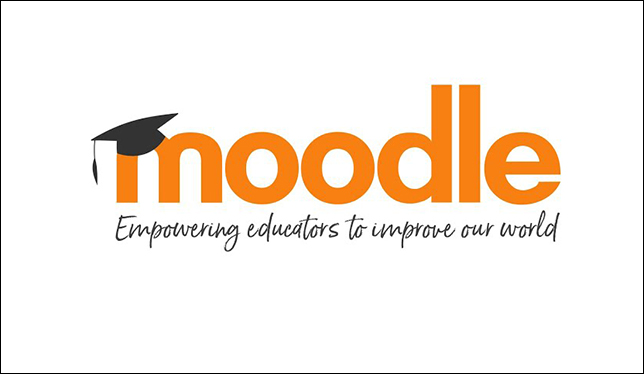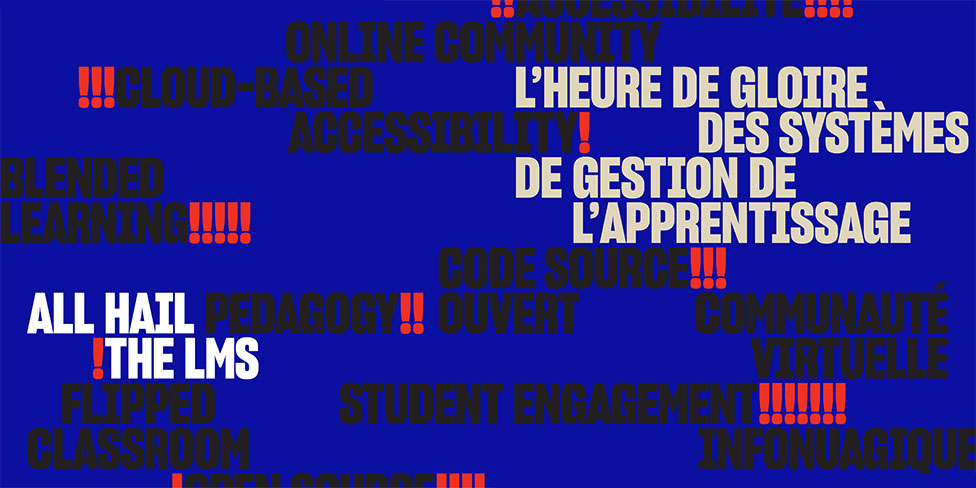Somehow, last spring, teaching and learning staff at the University of Saskatchewan found the time to make a big decision: the university would migrate its learning management system, or LMS, from Blackboard Learn to Canvas. Back in the fall of 2019, the university had narrowed its search to two competing systems. Consultations and tests wrapped up before the university went into lockdown due to the pandemic, and in May 2020 it had signed with Instructure, the Salt Lake City company that offers Canvas.
“The old system wasn’t intuitive nor easy to use. It didn’t support important approaches in teaching we wished to advance,” says Nancy Turner, director of teaching and learning enhancement at U of S. The university’s self-hosted version of Blackboard wasn’t technically up to snuff and struggled on mobile devices. What’s more, Blackboard was moving to a cloud-based system and was abandoning the version that the university was using, so the university had to upgrade or change vendors. With instructors and students relying on the LMS for every lecture, assignment and quiz, thanks to COVID-19, the institution quickly needed a crack system.
Canvas suited its criteria around accessibility and pedagogy – particularly with regards to assessment, evaluation and collaboration – and testers enjoyed using it. “We really liked that it’s a system that doesn’t try to be everything,” says Dr. Turner. “It’s not overly complicated. It doesn’t have a lot of bells and whistles but what it does, it does well.”
“If I’d had a crystal ball and knew what would happen, we’d be fully on the new system by now. But nobody could have predicted the pandemic.”
Instructure said that it would migrate U of S to its cloud-based LMS on a timetable of the university’s choosing. Due to the pressures of the pandemic on digital and remote learning, the university opted to move quickly. “We were going to do it over a two-year period. Now, it’s a one-year period,” says Dr. Turner. By this past September, more than half of the university’s courses were running on Canvas. Another 20 percent of courses were scheduled for January and the full migration will be completed by fall 2021. “So far it’s been great,” says Dr. Turner of the change. “If I’d had a crystal ball and knew what would happen, we’d be fully on the new system by now. But nobody could have predicted [the pandemic].”

While learning management systems have become arguably the single most important software system for universities in recent years, the past 10 months have only accelerating recent trends. Really, a university today is their LMS. As a result of the pandemic, “what we thought things would look like in 2030, that’s now our 2021,” says John Baker, president and CEO of D2L, the company headquartered in Waterloo, Ontario, that runs the Brightspace LMS.
With everyone online all the time, the benefits and shortcomings of these systems, in terms of functionality and ability to support pedagogical goals, have been laid bare for all to see. “Learning management systems have had to change and will have to change again,” says James Wiley, principal analyst with Eduventures, a U.S.-based research and advising company that works with higher education institutions. This level of change, for both the companies and their clients, will be challenging to navigate.
A bit of history
Web-based learning management systems first appeared in the mid-1990s. One of the early, widely used systems, WebCT, came out of the University of British Columbia in 1996. At its height – after it was bought by a Boston company in 1999 – it was used by 10 million students in 80 countries. Blackboard, founded in 1997 and based in Washington, D.C., purchased WebCT in 2006. At the time, WebCT served as the LMS for 70 percent of Canadian colleges and universities.
In 1999, third-year University of Waterloo systems design engineering student Mr. Baker founded Desire2Learn, now D2L. At the time, there was no internet in classrooms – you had to visit computer labs to get on the web. “I was literally knocking on doors, talking to professors about going online,” he recalls.

In the early 2000s, Moodle emerged out of Australia as an open-source system offering a basic platform for free that schools could fine-tune themselves. The company soon moved to a hybrid model: certified Moodle partners would charge schools for programming, support and hosting the LMS, paying a licensing fee back to Moodle, giving it a revenue source – but you could also go entirely DIY.
These systems still rank as some of the top players worldwide, with Moodle the most popular LMS in Canada, used by 39 percent of higher education institutions in 2019, according to data collected by Listed Tech. Many schools took to Moodle when WebCT was bought by Blackboard. “WebCT didn’t cost that much. But when Blackboard acquired it, they were planning on at least doubling the annual fees,” recalls Marc Couture, pedagogical advisor on information and communication technology at Université de Sherbrooke. The price tag would have been north of $100,000 for the school of about 30,000 students, plus U de Sherbrooke wanted to customize its system. “The attraction to open source was there to begin with,” says Mr. Couture.
Today, a handful of schools across the country, including York University and the University of Alberta, use Moodle, but its true stronghold is in Quebec. The entire CEGEP system is on Moodle, as are most of Quebec’s universities, including Université de Montréal, Concordia University and the Université du Québec network. Of note, Université du Québec à Montréal recently received funding from the Quebec government to integrate Moodle and other learning platforms into a new interconnected “digital learning environment” called DÉFI for all of the Université du Québec network’s 10 institutions.
Homegrown LMS Brightspace has about a quarter of the market, but that’s growing. Carleton University just signed with D2L in 2020 – it had been using Moodle. “It has an analytics system that allows you to understand more about student engagement and generates reports that are easy to understand,” says David Hornsby, associate vice-president, teaching and learning, at Carleton. This year, the company also landed the University of Victoria as a client, a former Moodle user, and Athabasca University recently announced that it is partnering with D2L and U.S. technology firm Ellucion to integrate all aspects of online learning into “a seamless whole.”
Despite being a powerhouse elsewhere, Blackboard has a mere 11 percent of the Canadian market, and its dominance is waning worldwide too. “A lot of people see Blackboard as the evil empire,” says Greg Gay, an IT accessibly specialist at Ryerson University’s Chang School of Continuing Education. (Mr. Gay helped create an accessibility focused, open-source LMS called ATutor in 2002 when he was at the Ontario Institute for Studies in Education at the University of Toronto.) Among Blackboard’s Canadian users are Thompson Rivers University, Ontario Tech University and the University of Windsor.
Upstart Canvas, which was launched in 2008, has been growing globally. It’s only been available in Canada in recent years but has rapidly made inroads and is now being used by eight percent of Canadian higher-ed institutions. A number of big schools have recently signed on, including the University of British Columbia in 2017 and the University of Toronto in 2018, along with U of S this past year.

The open-source community
On September 1, 2020, York University relaunched its Moodle-based LMS with a new name: uClass. The system is now hosted on 20 cloud-based, high-performance servers, up from 12, and programmers at York have added new functions. The upgrade works seamlessly with communications platform Zoom and York’s artificial-intelligence-based virtual assistant, SAVY. It allows for plug-ins that permit mathematical formulas, and overall better supports the ideas of instructional design.
“When you have an open-source LMS, you do what you want with it,” says Donald Ipperciel, York’s chief information officer. York has a three-person team that codes for Moodle, one of whom Dr. Ipperciel calls his “secret weapon” and “the best Moodle expert in Canada.” The team takes individual requests from instructors at York and will customize the look of a course and add new features.
One of the appeals of open-source systems like Moodle is that they come with their own community of worldwide users, says U de Sherbrooke’s Mr. Couture. MoodleMoot conferences encourage collaboration; the last Canadian event was held at York in February 2018 and Barcelona virtually hosted the most recent global edition this past November.
Community has been a big help to Brock University, which is one of the few Canadian schools using the open-source LMS Sakai, a system that dates back to 2005 and is distributed for free by the Apereo Foundation out of the U.S. Last spring, Brock started having a problem with its online tests and quizzes using calculated questions, a function that generates unique questions for individual students, subbing in different numerical values. Sakai was getting stuck in a loop and taking a long time with these tests.
Through the foundation’s online community, Matt Clare, associate director of technology-enabled learning at Brock, found out that New York University had the same problem and had created a patch. Brock uses a third-party contract provider to host and do tech support on Sakai, so Mr. Clare had them adapt the patch and the problem was quickly solved. “The great thing about Sakai is we can get this insight from others around challenges and solutions,” he says.
“The sticker price looks like it’s free. But you need to measure the cost, external and internal, the time your faculty and staff have to spend on it.”
Mr. Clare admits that if Brock had a commercial service, the school would just call the company and demand a fix. “I understand why universities do it,” says Dr. Ipperciel of going with a proprietary LMS. “It’s less headache. Also, it’s probably more robust when you think about system resiliency. They don’t have to worry about upgrading their system; it’s in the cloud, someone takes care of that.”
While Brock’s LMS is cloud-hosted – many schools are moving in this direction and no longer run their own servers for many IT functions – it still only has so much capacity in its contract. As a result, Brock drew up a timetable for spring exams to limit the number of online tests happening at once.
Those who pay for-profit LMS vendors to host and run their services often get the promise of all the capacity they need, zero downtime and minimal hassle. This was Carleton’s argument for moving away from Moodle and becoming a client of D2L. “It comes down to efficiencies and asking ourselves, what is our core business?” says Dr. Hornsby.
But customers of commercial systems can be at the whim of business decisions. Instructure and its Canvas LMS was purchased by a private equity firm in December 2019, causing speculation that the company might focus more on its lucrative corporate clients, particularly since it had been bidding low to build market share. “It’s easy to use, but what will it look like in five years?” says Mr. Wiley. “You don’t want it to look the same, you want them to keep innovating.” Blackboard has faced questions about its financial health over the past few years, which has influenced many universities to move to a different vendor.
Importantly, which type of LMS is cheaper? No one seems to know. “The sticker price looks like it’s free,” says Mr. Wiley of open-source systems. But, “you need to measure the cost, external and internal, the time your faculty and staff have to spend [on it],” he says, admitting he has no idea which approach is less costly. Dr. Ipperciel of York was at the University of Alberta back in 2010 when it did an analysis of the cost difference between Moodle and Blackboard, and found that the open-source solution would cost just 25 percent of the proprietary one. “Even with a team, it’s still cheaper,” he says.
Mr. Baker from D2L begs to differ. He says the company’s clients pay as low as $40,000 annually for Brightspace, while others pay more than $100,000, all based on the size of the institution. Open source systems, with their hidden costs, will run from five to 10 times more, he says. The University of Victoria moved to Brightspace in part to save money, he says. “They’re going to put the money into other things that they say will have a higher impact.”
The ever-growing demands of an LMS
Today’s learning management systems are being asked to do a lot. But they can struggle with the multimedia, multi-feature needs of fully online universities. “Historically, LMSs were very much about resource management. They were to support face-to-face learning,” says Michelle Sengara, an online teaching and learning expert who’s been working with York on a strategic innovation team. Then, “as we got more skilled with digital learning, we started to say, this thing is supposed to help us learn,” she says. Now the pandemic has forced even the most technophobic instructors online and nudged those already comfortable with LMS portals to explore their other functions, and then demand even more.
This puts today’s LMSs at a crossroads: they’re great at housing content and have some communications and pedagogy-enabling features, but need outside software, plug-ins and the like to offer video, video conferencing, live chats and STEM-enabled features. “There are demands from users for different kinds of functionality, for better ways of making synchronous work happen. These tools often function outside the LMS,” says Clare Brett, an associate professor and chair of curriculum, teaching and learning at OISE/U of T.
Mr. Wiley of Eduventures says LMS companies are faced with a dilemma around how many of these outside functions to integrate into their systems. “They’re like Pacman, swallowing up other functions to deal with the changing market. Some have conceded these side markets to others and just focused on what they do best.”
But, signing up with other vendors for many of these add-on functions adds costs and challenges. For instance, U de Sherbrooke has long used Adobe Connect for video conferencing, but that became a problem last spring. “We didn’t have enough licences to go around,” says Mr. Couture. The school added Microsoft Teams and gave instructors a choice. “But it’s not well-integrated into Moodle,” he says, which the tech team hopes to fix soon.
Canadian universities also want their LMSs to more holistically support their pedagogical values. Functionality to support peer review, self-evaluation, collaboration, discussions, the flipped classroom and portfolios can be accommodated in today’s systems to varying degrees, but they seldom synch up easily.
“What we want to do is create an LMS experience for teachers that allow them to understand all the features, be user friendly and have drop-down menus for feedback around skills.”
Under pressure, LMS companies are constantly upgrading, balancing new features with the need to preserve ease of use. Mr. Baker says D2L invests 35 to 40 percent of its revenues in research and development, adding or improving on tools that focus on student engagement, ease of evaluation for instructors and aiding outcome-based learning. Nevertheless, many enterprising folks still prefer to do their own thing.
Dr. Sengara’s group at York has been creating Moodle-based course shells that prioritize pedagogy and instructional design. “What we want to do is create an LMS experience for teachers that allow them to understand all the features, be user friendly and have drop-down menus for feedback around skills.” Features include a data dashboard that shows which students need to hand in assignments or haven’t logged on recently; an email window pops up so instructors can easily message stragglers. The student dashboard allows them to see their learning in one place – not just their grades, but their progress on 21st-century skills such as empathy and collaboration. The group is also working on a chat function that appears during lessons.
Dr. Brett, meanwhile, helped create a communication and collaboration tool dubbed the PeppeR Project. Discussions can happen over several weeks and can have internal links, so they connect to content or previous chats. “It does allow some of the things we really value, in having deep discussions and keeping students motivated and generating ideas,” she says. The Canvas-based LMS at U of T integrates with PeppeR, so instructors can add it to their courses.
There is also a wide range of small, more flexible LMSs out there to suit different needs, says Mr. Gay of Ryerson. “People are tired of fighting with the big companies. They want to use their own systems and do what they like with them.” Mr. Gay is piloting the use of a system called Matrix that’s been designed for the corporate sector, because the university’s D2L system doesn’t allow for users who don’t have a Ryerson email address. “We want to be able to do micro-learning. On D2L, there’s no way for us to do what we want to do,” he says, adding that he hopes that finding a flexible LMS can allow the school to change how it offers courses and expand its student base.
Undeniably, the pandemic has accelerated the use and reliance of these online systems and made them a part of everyday life for universities. “The silver lining with this pandemic is these online spaces have been demystified. When we get back to face-to-face, there’s going to be a lot more of an integrated approach,” says Carleton’s Dr. Hornsby. But, some experts are more circumspect. “With any kind of technology, the reality is, on its own, it does nothing,” says Dr. Brett. “It’s how you use it.”
